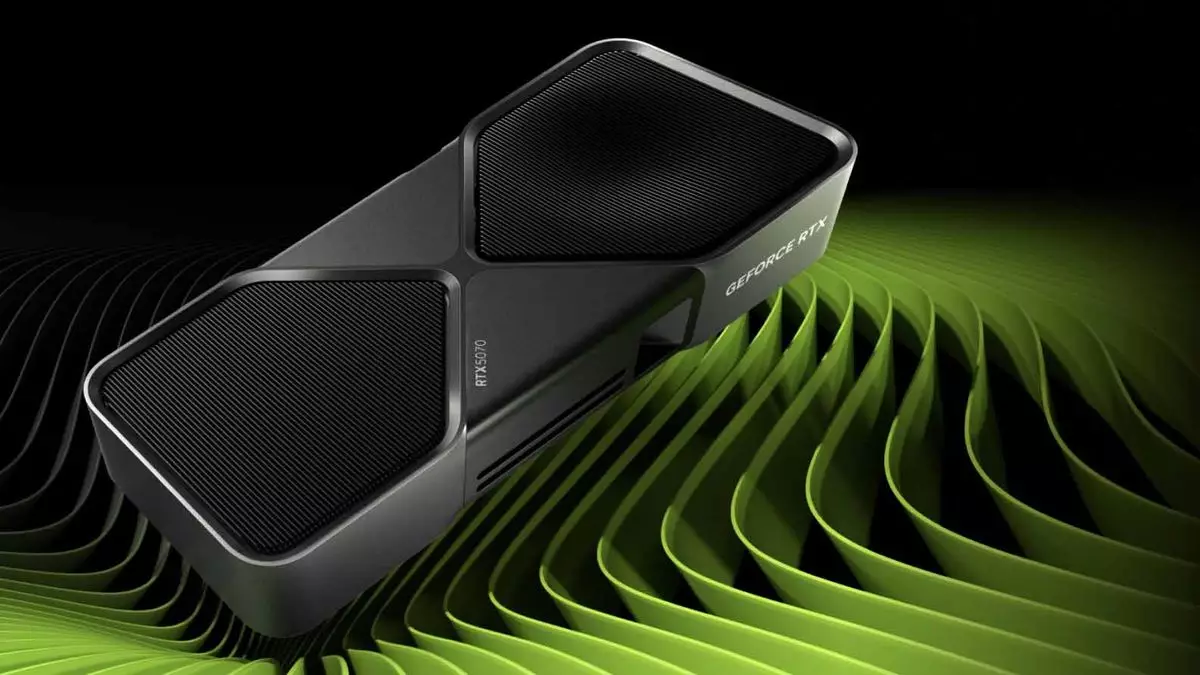The recent unveiling of the Nvidia GeForce RTX 5070 at CES 2025 has electrified the tech community. Positioned as the underdog among the newly introduced 50-series GPUs, the RTX 5070 is drawing attention for its impressive capabilities and promising performance metrics. However, while Nvidia’s CEO Jen-Hsun Huang boldly proclaimed that this card offers “RTX 4090 performance at $549,” a nuanced examination reveals a more complex narrative.
Initial reports from tech journalism, particularly from outlets like PCGamesN, suggest that the RTX 5070 exceeds the functionality of its predecessor, the RTX 4090, in specific scenarios. A critical demonstration during CES showcased the GPU achieving outstanding frame rates in the game **Marvel Rivals**. Here, journalist Ben Hardwidge noted the RTX 5070 maintained an impressive output of around 240 frames per second (fps), outpacing the RTX 4090, which averaged only 180 fps.
While these figures spark enthusiasm among gamers and potential buyers, they also raise important questions regarding the nature of performance benchmarks. Nvidia’s commitment to AI-driven enhancements—specifically the integration of its new DLSS 4 technology—plays a pivotal role in this performance leap. In essence, the card’s ability to generate additional frames, leveraging AI to interpolate visuals, provides a formidable edge in performance, lending a degree of skepticism to comparisons with the older card.
Nvidia’s implementation of DLSS 4 Multi Frame Generation must not be overlooked, as it fundamentally alters the landscape of graphical performance. Traditional rendering techniques are increasingly falling behind as AI technologies reshape what is feasible within gaming environments. DLSS 4 allows for the generation of up to three artificial frames between traditional frames, effectively enhancing performance without the need for more raw graphical power.
However, labeling the RTX 5070 as an unequivocal replacement for the RTX 4090 may mislead prospective users. The performance advantage noted by PCGamesN is contingent on the presence of DLSS 4 and the specific optimizations within **Marvel Rivals**. In games that do not capitalize on these technologies, differences in performance could be markedly reduced, thereby necessitating a cautious approach from consumers seeking a straightforward upgrade.
A detailed scrutiny of testing conditions is essential for interpreting the RTX 5070’s showcased performance. The hardware setup, including the CPU used alongside the cards during benchmarks, remains undisclosed, creating an ambiguous understanding of how replicable these results are under varied conditions. Furthermore, it’s crucial to consider that the RTX 4090 lacks the advanced features that DLSS 4 provides—making the comparison a somewhat unequal playing ground.
Moreover, Nvidia itself acknowledges that the performance seen in **Marvel Rivals** may not represent a universal experience across all titles. This reality means that gamers should exercise caution before assuming that the RTX 5070 will universally deliver the same kind of performance boost, especially in less optimized games or older titles that do not utilize DLSS technology.
While the RTX 5070 is stirring excitement with its potential to deliver high-end performance at a consumer-friendly price point, the context of that performance must be carefully considered. Nvidia’s forward-thinking approach employing artificial intelligence through DLSS 4 gives the RTX 5070 an impressive advantage, but it also creates a dependency on specific games being effectively optimized for this technology.
As the 50-series GPUs prepare for widespread launch, prospective buyers are advised to await comprehensive reviews across a variety of games and performance scenarios. What seems to be an accessible alternative to the RTX 4090 could either prove to be a groundbreaking entry in the GPU market or simply another addition to the long line of GPUs that didn’t quite fulfill their promises outside of the laboratory. As always, the true test of hardware lies in real-world application and longevity in the ever-evolving landscape of gaming technology.

